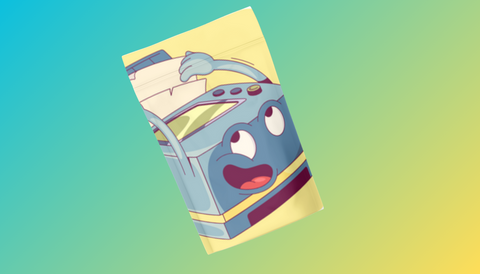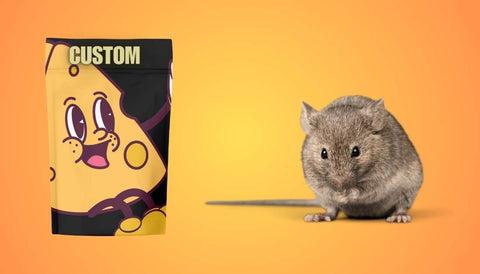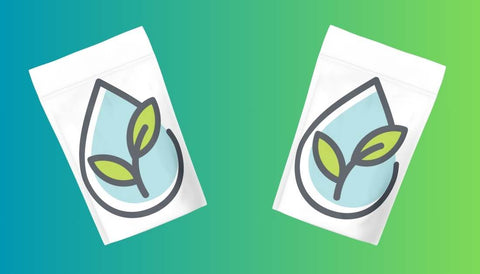Printing on Mylar bags requires a printer that can handle non-porous and often thicker materials. Mylar, a brand name for polyester resin, is used to make durable, reflective bags and packaging which are common for a variety of products due to their strength and ability to preserve contents. Traditional home printers are not suitable for printing directly onto Mylar as they are configured to handle paper or simple labels that absorb ink.
In your quest to print on Mylar bags directly, you will likely need to consider specialized printing equipment. Options include thermal transfer printers, screen printing, or industrial inkjet printers, each designed to manage the unique surface of Mylar bags. Thermal printers are a common choice for printing labels that can then be applied to Mylar, while screen printing is favored for its ability to print directly onto pre-formed bags. Inkjet printers designed for industrial applications can print directly on Mylar as well, using inks that can adhere to non-porous surfaces and dry quickly without smudging.
Before making an investment in a printer, it's important to evaluate the volume of printing, the complexity of the designs, and the required durability of the printed image. Short runs with simple designs might be more cost-effective using thermal-printed labels, while high-volume or intricate, multi-colored designs could justify the higher initial cost of screen printing or industrial inkjet equipment. Assessing your needs against the capabilities of these printing methods will guide you in finding the most suitable printer for your Mylar bag printing project.
Understanding Mylar Bags and Printing Requirements
When preparing to print on Mylar bags, your primary concerns are the material's unique properties and choosing a printer that matches those characteristics. This ensures quality prints and longevity of both your product packaging and printing equipment.
Materials and Properties of Mylar
Mylar is a brand name for a type of stretched polyester film. Mylar bags are known for their durability, chemical stability, and reflective qualities. The material is non-porous and can be heat-sealed, which makes it an ideal choice for preserving freshness and protecting the contents from environmental factors.
Key Properties:
- Non-porous: Does not allow water or air to pass through.
- Reflective: Shiny side can improve aesthetics and visibility.
- Durable: Resistant to tears and punctures.
- Stable: Does not react with most chemicals, reducing risk of contamination.
Choosing the Right Printer for Mylar Bags
To print on Mylar bags effectively, you must select a printer that can handle the non-porous, slick surface of the material. There are two main types of printers suitable for this task: inkjet printers and laser printers.
Inkjet Printer:
- Pros: Capable of producing vibrant, high-quality prints.
- Cons: Less effective on slick surfaces without proper ink and settings.
Laser Printer:
- Pros: Uses heat and pressure to bond toner, making it more suitable for printing on Mylar.
- Cons: Potential for heat to warp or damage the Mylar if not used correctly.
Printer Selection Criteria:
- Must handle thick, non-porous materials.
- Requires specialized inks or toners that adhere to Mylar.
- Needs adjustable heat settings to prevent material damage.
In choosing the right printer, consider the print quality, durability, and compatibility with the Mylar bags you intend to use. Ensure the printer's specifications can align with the demands of printing on such a specific medium.
The Printing Process on Mylar Bags
To print on Mylar bags, you need the right equipment and an understanding of the printing process. Achieving a durable and clear print requires proper design preparation, selecting the appropriate printing technique, and the correct ink for strong adhesion and legibility.
Preparing the Design
Before you begin printing, your design must be created using design software on a computer. Ensure that your design's resolution is high enough to prevent pixelation when printed. Save your artwork in a format compatible with the printer you'll be using, typically in vector format like AI or EPS for precision.
Screen Printing Technique
Screen printing on Mylar utilizes a mesh to transfer ink onto the bag, except in areas made impermeable to the ink by a blocking stencil. The steps are straightforward:
- Set up your screen with the desired design.
- Place the Mylar bag on the printing board.
- Pour your ink onto the screen and use a squeegee to spread the ink over the screen and onto the Mylar surface.
- Cure the ink with heat to ensure durability and prevent smearing.
Screen printing is ideal for high-volume orders, offering a balance between quality and efficiency.
Ink Selection and Usage
Choosing the right inks is crucial for Mylar printing due to its non-porous nature. Solvent-based or UV-curable inks are preferred for their durability and resistance to fading. When applying ink:
- Ensure an even distribution of ink for a uniform print.
- Allow for proper drying time; solvent inks may require a longer curing time as opposed to UV-curable inks which set quickly under UV light.
With the correct technique and materials, you can produce prints on Mylar bags that are both visually striking and long-lasting.
Customization and Branding Considerations
When you're looking to print on Mylar bags, two pivotal aspects to focus on are the design of your branding elements and the extent to which you can customize your packaging. This determines how effectively your product stands out on the shelves.
Importance of Design and Branding
Design and branding are crucial because they are the first points of engagement with your customers. A strong design featuring your logo and branding can increase product recognition and foster brand loyalty. Crafting your Mylar packaging with an eye-catching design not only differentiates your product but also conveys your brand's message. Ensure that your design:
- Reflects your brand's values and aesthetics.
- Includes essential product information clearly and legibly.
- Utilizes colors and imagery that align with your overall branding strategy.
Customization Options
For customization on Mylar bags, there are different methods to personalize and make your packaging unique:
- Flexographic Printing: This is a versatile choice that supports various ink types and colors for vivid, high-quality prints. It's suitable for large runs due to its speed and efficiency.
- Heat Transfer: Ideal for high-detail custom designs, heat transfer allows for personalization down to the individual unit level but may necessitate a larger initial investment.
- Adhesive Labels: If you're requiring a less permanent solution or have budget constraints, high-quality labels with strong adhesive can be customized and applied to your Mylar bags. This option also allows for small-scale or variable data printing.
Remember, your chosen customization method should balance creativity with the practicality of your packaging needs. It's not just about making the Mylar bag look good; it's about creating a package that carries your branding effectively while serving its function.
Preservation and Packaging Benefits
When it comes to extending the shelf life and maintaining the quality of food products, Mylar bags offer superior preservation capabilities. Your choice of packaging plays a crucial role in protecting the contents from environmental factors.
Barrier Properties for Food Storage
Your Mylar bags possess exceptional barrier properties that are essential for food storage. These bags typically incorporate aluminum foil, which acts as a powerful barrier against moisture, light, and oxygen – the three main culprits in food degradation. By using Mylar bags with:
- Aluminum: Offers a near-impermeable layer to external elements.
- Oxygen Absorbers: Paired with these bags, they help maintain a low-oxygen environment.
You can significantly extend the shelf life of your food products by preventing oxidation and other deteriorative processes.
Advantages of Using Mylar for Packaging
The packaging efficiency of Mylar bags goes beyond just their barrier properties; there are key advantages that make them a preferable choice for your packaging solutions.
- Cost-effective: Mylar is a budget-friendly option that doesn't compromise on quality.
- Durable: Resilient to punctures and tears, ensuring the integrity of your package.
- Flexible: Easily shaped and sized for a wide range of products.
By choosing Mylar bags for your food packaging needs, you are implementing a solution that blends preservation proficiency with practical benefits.



